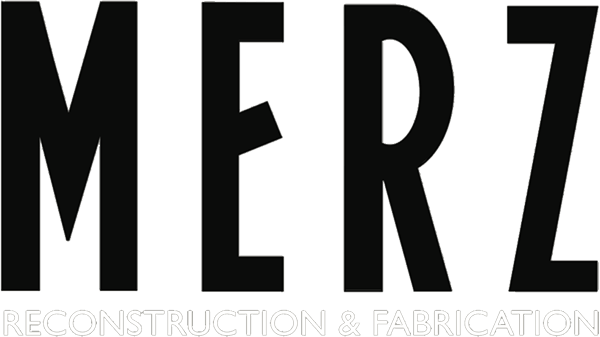COLLAGE & SOCIAL PURPOSE : WORKSHOP RESIDENCIES October 2023
The October 2023 Workshop-Residencies at MERZ will explore collage as a contemporary working method informed by history and ideology. MERZ is inspired by the working experiences of Kurt Schwitters and Hannah Höch.
This 28 day residency will support artists to interpret three themes introduced during Workshops in week one. The Workshop Week will demonstrate how ‘collage’ from grand to small scales has informed geographic and historic outcomes, inviting an informed contemporary working methodology to combine reflection with response.
Over the remaining three weeks five Collage & Social Purpose artists will focus on one or more of these ‘local to epic’ themes to help develop art-practice for their own art ‘locations’.
Themes:-
Mapping: Collage’s role in the local man-made landscape, with a focus on changing the course of the River Nith and the recent building of Charles Jencks’ Multiverse, both under the direction of the Buccleuch Estates. Objective: explore the impact of historic interventions that altered landscape and a more recent creative reclamation of a brownfield site within that landscape. Contemporary interpretation: Rewild or Recreate
Study focus: The River Nith that runs through Sanquhar to the coast has altered course over the centuries. The river is subject to flooding. Centuries ago the river used to run around Sanquhar Castle providing a natural defence. The Buccleuch Estates periodically cut timber on their land making the river’s path vulnerable. The residue from coal mining up to the 1970s inspired the Duke of Buccleuch to engage Charles Jencks to design and supervise building of the Multiverse.
Sculpture: Collage and ceramics follows the May 2023 MERZ exhibition Impressions of Sanquhar, that gathered symbols and words left in bricks, clay and steel in Upper Nithsdale. Objective: interpreting ‘found sculptural forms’ integrated over time into a rural or urban land/townscape. Contemporary interpretation: Reinterpret or Conserve
Study focus: Raised text on Sanquhar’s celebratory blue plaques offers historical reference to the list of celebrated persons and enshrines a civic value. Memorials record those fallen in world wars and those killed by ‘English’ soldiers as Covenanters. The names of local companies and brickwork owners can be found throughout the town cast into brick, while indications of the town’s water flow are recorded on signs found above ground. These raised and indented texts are literal as well as more subtle directions to historic ownership, social value and meaning for the town, and over time some suggest contradictory as well as a changed emphasis. Wire and left-over industrial remnants can be located across the landscape. Are these ‘found sculptures’ and possibly in need of documentation?
Film: The European Workers’ Film Movement of the 1920s and 30s was influenced by Comintern Cultural Policy. Objective: contemporary work in animation, film or sequential collage with an emphasise on socio-political ambitions. Contemporary
interpretation: Conceit or Provoke
Study focus: The Communist International (Comintern) circulated films across Europe in the late 1920s early 1930s that inspired local workers’ film groups (and middle class friends) to ‘turn their film cameras away from the beaches and onto the factory floor’. ‘Prominent Soviet director Sergei Eisenstein believed there were five different types of Soviet Film Montage: Metric, Rhythmic, Tonal, Overtonal and Intellectual. The Soviet movement is widely acknowledge for changing the landscape of film, particularly film editing. We explore the workers’ film movement in the UK with film and collage interpretations from the 1970s inspired by montage and collage from the political movements that arose between the two world wars.
APPLICATION
This is a competitive workshop-residency with the expectation that five artists will work in cooperation with artists and colleagues for 28 days from 2nd October. Local artists and historians will provide introductory talks and discussions on the themes.
Work produced will be retained by the artists while rights to filming, interviews and photographs during the residency will be made for publication and display by Summerhall TV on behalf of MERZ.
The workshop-residency will conclude with an exhibition at MERZ on 28th and 29th October.
Resources available include clay and silicon for taking impressions, a kiln for firing, digital filming and editing equipment, maps and collaging materials. Digital printing.
Explorations will investigate the changed course of the River Nith, the development of the Multiverse (in person and through film with Charles Jencks). Soviet films from the 1920s and 1930s will be screened together with a film from the 1980s on the Workers’ Film Movement. Walks will explore text impressions and ‘found’ sculptures.
The fee of £1750.00 includes self-contained accommodation at MERZ (three sharing at no 5 and two singles at Tadpole and Bothy) workshop fees, studio and gallery spaces. The fee excludes transport to and from MERZ and meals.
Details of MERZ accommodation, studios, gallery and museum can be found on www.merz.gallery/residencies.
Image: Work in progress during the Kolaj Institute workshop residency at MERZ in April 2023
Please complete an application in the form indicated and return to hello@merz.gallery before 1st July:-
Name
Biography/CV
Statement about artistic practice and aspirations
Professional website/Instagram
Email address
Postal address
Phone number
Up to 300 words outlining what you would like to achieve from this workshop-residency Up to six images and/or written examples of work (jpgs and pdfs) provided with relevant dates
